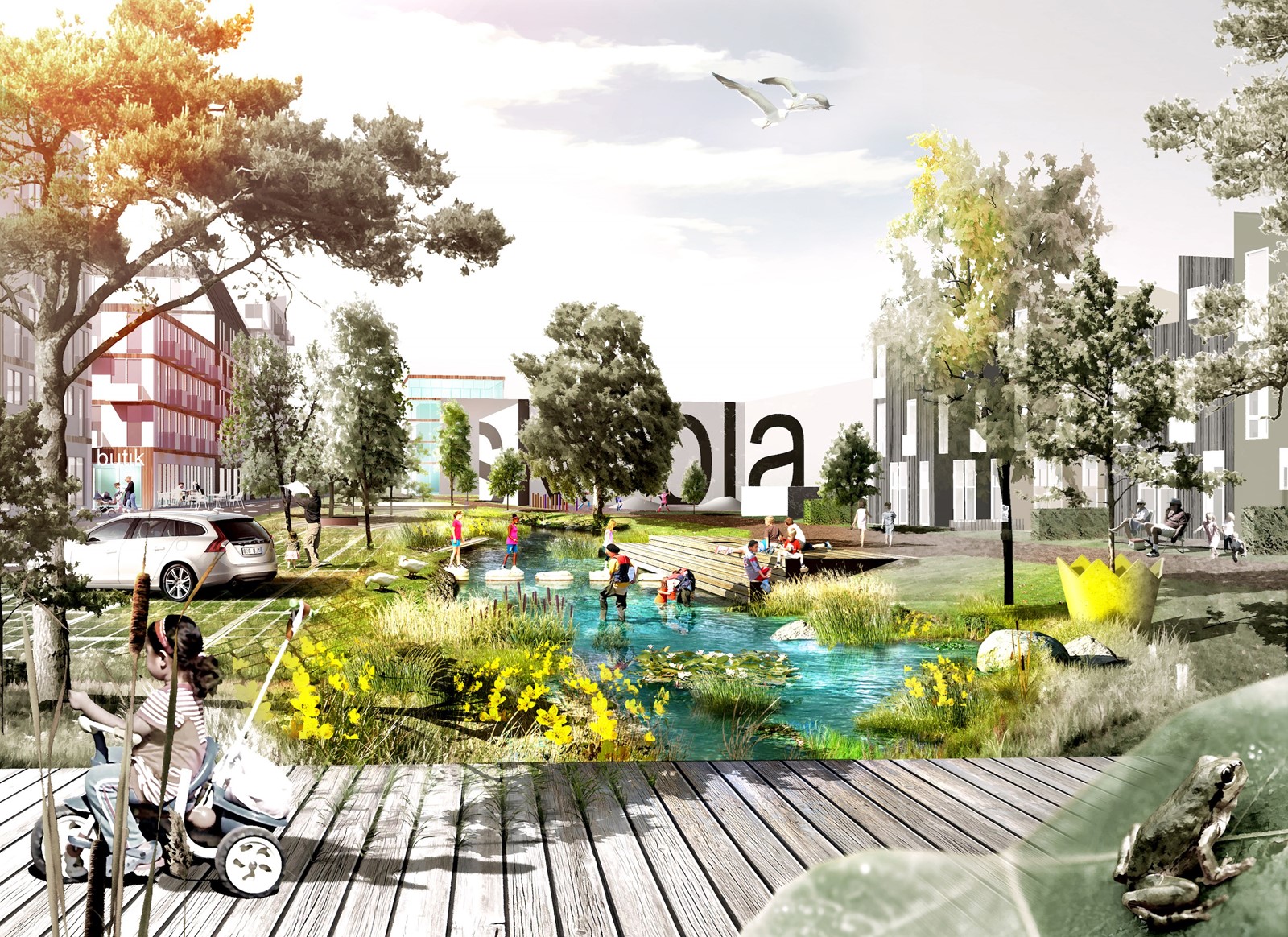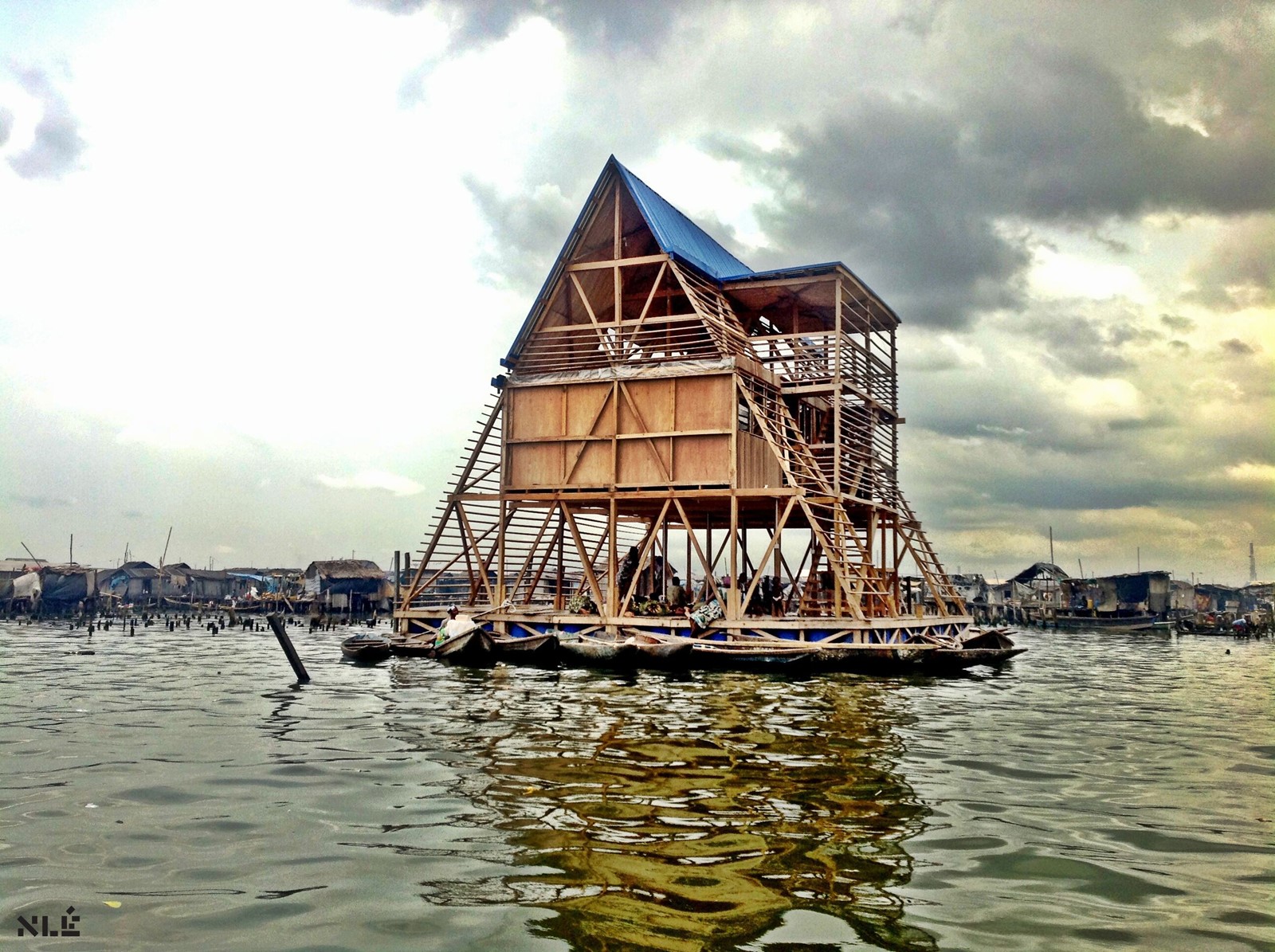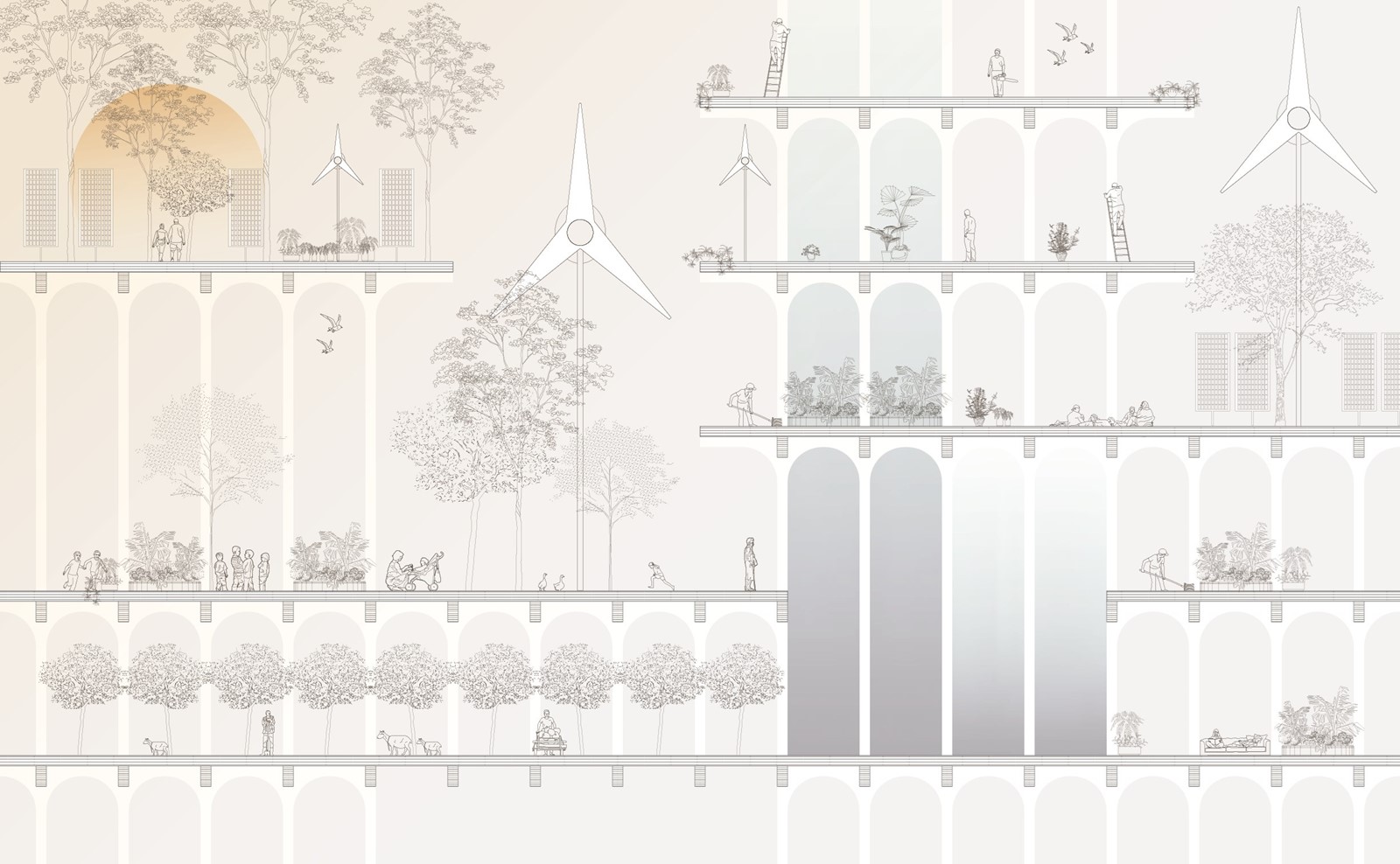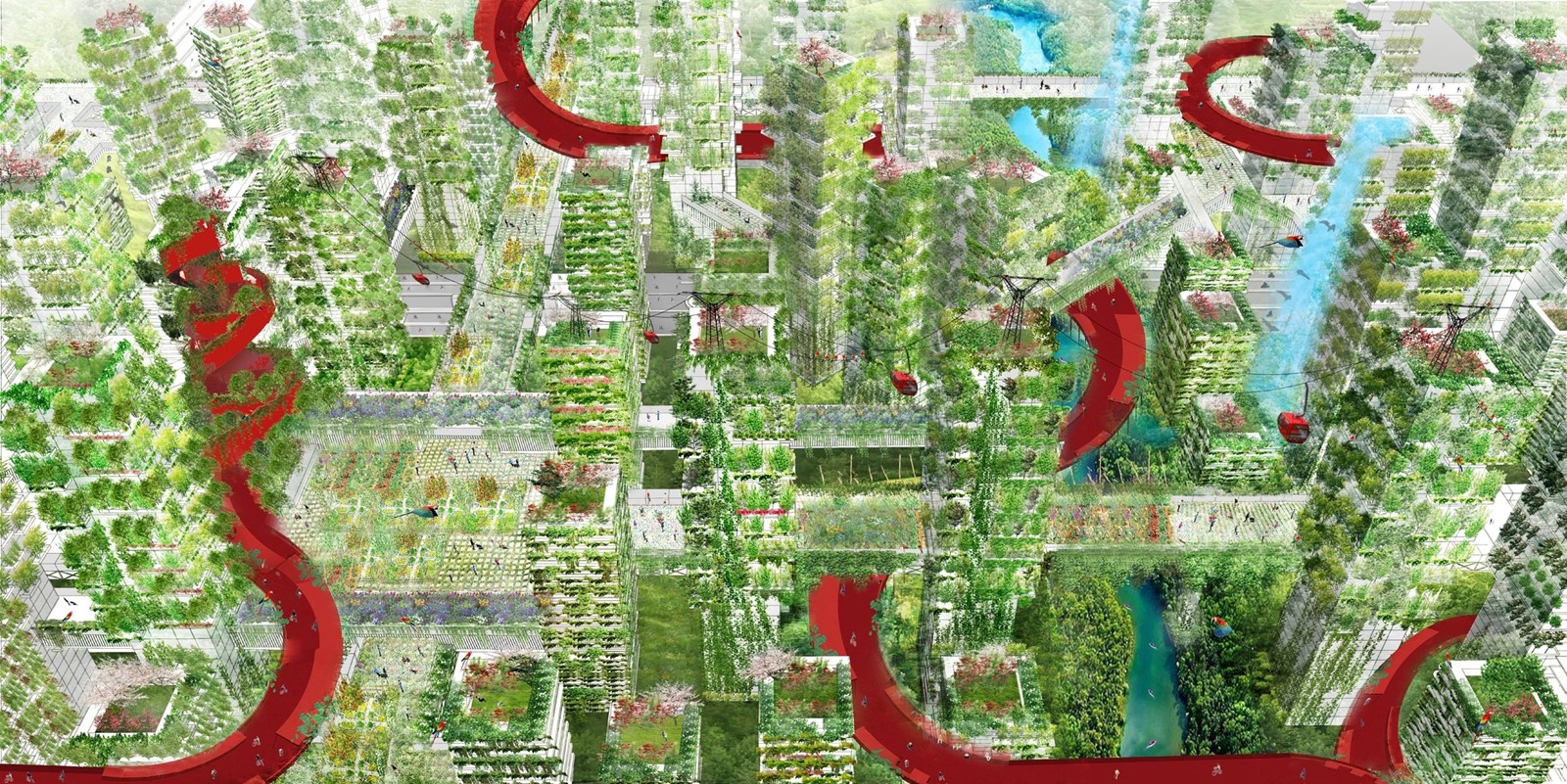Architects from Lisbon to Lagos tell us how they’re reimagining urban spaces for a greener future
Few things are as certain as climate change, but our continuing desire to live in cities is one of them. It’s tempting to think of cities as, if not immune, then protected from the worst advances of climate change. For one thing, most of us think of them as home – 55 per cent of the world’s population live in urban areas, but this is expected to increase to 68 per cent by 2050. Plus, the dense formations of seemingly robust city buildings seems to offer a defence to extreme weather events, key services such as hospitals tend to be easily accessible, and even just being surrounded by lots of people can be reassuring.
But cities are, of course, vulnerable. The most obvious issue to consider is rising sea levels. By 2050, over 570 low-lying coastal cities including London, Osaka and Dhaka will face projected sea level rise of at least 0.5 meters. This will put over 800 million people at risk to the slow creep of advancing waters and the thunderous devastation of coastal storm surges. Rising temperatures will be more acutely felt in the densely populated urban areas, and we’ll feel those risks more than anyone else as we slip into old age. Feeding our cities will become an increasingly prominent issue, too – particularly in those regions where desertification scrapes the top soil off already dry ground.
So far, so bleak. But leading thinkers, from architects and urban planners to science fiction writers, are already dreaming up how we might adapt to climate change while also stemming our carbon emissions in the process. To quote Chelsea Manning, “we got this” – in theory at least – and we owe it to future generations to be as hopeful and ambitious as the currently imprisoned activist and campaigner. Kim Stanley Robinson’s 2017 novel, New York 2140, imagined a future where the world’s coastal cities had been hit by two major sea level rises, or what he describes in the book as “pulses”. Normal life, though, had not ceased to function. Indeed, it still looked a lot like ours, but his version of New York learnt to live with a higher sea level, while vast skyscrapers were home to highly developed, self-sufficient housing co-ops. Robinson’s ideas might be a model our own aspirations for the future. It’s a far cry from the orange, dust-filled Los Angeles vistas of Blade Runner 2049 – but our cyberpunk future is not yet mapped out. We still have the power to change course.
As part of A Future World, we asked five leading young architects to imagine what their cities should look like in the year 2075, focusing on the visionary ways in which our urban spaces can meet the unique challenges of climate change.
GOTHENBURG

Hanna Ahlström Isacson is an architect at Europe-wide architecture firm, White.
Hanna Ahlström Isacson: In 2075, I’m 90 years old. During my lifetime, we have lost and found the basic meaning and needs of being human. Climate disasters have taught us the lesson of change. The value of nature and ecosystems weren’t noticed until they almost disappeared. The year 2075, the common man truly understands the power of nature and functioning ecosystems – for our survival, development, welfare and wellbeing.
My Gothenburg in the year 2075 is a healthy, green, living city to live and thrive in. (Right now), Gothenburg faces several ongoing and future threats caused by climate change. Increased temperatures and increased numbers of heat waves during longer periods leads to higher risks of drought and fires. More frequent and intense rains lead to rising water levels, imbalanced waterflow and increased risks of flooding, landslides and salt water contaminate the river Göta Älv”, the city’s main source of fresh water. Warmer and more humid climates favor invasive species, pests and infectious diseases over our native species. This weakens ecosystems and reduces biodiversity.
To prevent, mitigate and adapt to the climate changes, we need nature. Functioning ecosystems benefit humans with many and varied products and services – so-called ‘ecosystem services’. Some ecosystem services are more known and visible – for example, that vegetation give shade or wind protection, suppress noise, clean air, stabilises temperature, and store carbon. Others ecosystem services are not as obvious – for example, how biodiversity controls the amount of pests and disease carriers or how nature contributes to people’s health and wellbeing.
To plan and design our city with ecosystem services doesn’t have to be that hard. Different design components such as trees, green roofs and facades, ponds and rain gardens within the urban environment can be designed to create habitats for different species. Since the denser city of Gothenburg won’t have space for big parks and wetlands, we need to rebuild an urban nature network in an innovative and integral way. Since the functions of ecosystem services have often been proven to be superior to corresponding technical solutions, cost-effective and have the capacity to create many potential synergies in the long term, it’s kind of obvious. Urban, innovative nature is my way to go.
LAGOS

Kunlé Adeyemi is the founder Lagos-based architecture firm, NLÉ.
Kunlé Adeyemi: In my vibrant city of Lagos, the impact of climate change has become a day-to-day reality. With over 30 per cent of Lagos’s surface area covered by water, and its proximity to the Atlantic ocean, Lagos experiences significant sea level rise, increase in rainfall and recurrent flooding particularly in its dense low-lying areas. The city’s infrastructure is not built to deal with these conditions, thus flooding eventually leads to loss of lives and properties. Challenges remain common for all Lagosians regardless of social and economic status; bad roads, unstable power supplies, and inadequate public transportation systems.
It is the year 2075, Lagos is older, smarter and stronger: a true African Water City. There is greater awareness and interest in promoting diversity and coexistence between humanity and the environment, brought about by socio-economic improvements resulting from the city’s resilience and its people’s ingenuities. To further bridge physical and socio-economic gaps and in adaptation to climate change, the challenges of water, energy and transportation are rethought as opportunities for innovative building systems, new modes of mobility and collective healthy living. Instead of fighting water, we are learning to live with it.
Water settlements are intrinsic to human civilisation, now more so than ever with the pressures of urban growth, scarcity of resources, and vulnerability to the impacts of climate change. Inspired by the historic water community of Makoko and NLÉ’s Makoko Floating School modular system – a three floor A-frame timber structure this vision of African Water Cities is the new reality, scalable for the development of communities and other uses such as housing, cultural, hospitality, commercial and institutional functions. Lagos, like many coastal African cities, is at the frontier of new forms of architecture, urbanism, and settlements.
LISBON
Ana Lourenço is an architect at London-based architecture firm, Waugh Thistleton Architects.
Ana Lourenço: Lisbon is already making significant advances in creating a sustainable urban environment for its residents. Sitting on the on the banks of the Tagus, where the river meets the Atlantic Ocean, and as one of the European capitals with the most sunshine hours, Lisbon's location facilitates the use of natural resources. By 2075, hydroelectric and solar energy could allow the city to be entirely reliant on clean, green power. The city government has already implemented measures to restrict car use and prioritise cycling, public transport and walking. 2075 will see a city with an expanded network of pedestrian and cycle routes and a 100% electric public transport network, powered by the sea. Recent investment has transformed Lisbon’s waterfront into a pedestrian-friendly paradise of cafes, galleries and parks. This could be expanded by building bridges to cross the Tagus to the towns of Almada, Costa da Caparica and Montijo, connecting the city centre to the wider municipality. In order for this to happen however, we must limit the damage already done.
“Climate and architecture now coexist, caught in a delicate balancing act. As architects we have learned to work with nature, not against it” – Katherine Holbrook-Smith and Stuart Lodge
Research suggests that if we continue to emit carbon dioxide at current levels, much of Portugal and Spain will be engulfed as part of a new southern European desert by 2100. To prevent this, we must look to ways to drastically cut our emissions. As a major contributor to emissions the construction industry needs to address this urgently. The production of concrete and steel are energy intensive processes that release large amounts of carbon dioxide into the atmosphere: concrete causes up to eight per cent of global carbon dioxide emissions.
Alternative solutions must be embraced. Structural timber products such as glulam, CLT and LVL can be used in place of concrete and steel. Not only does this reduce the need for highly polluting materials, but since trees naturally bind and sequester large quantities of carbon through photosynthesis, when we build using timber, we actually remove carbon from the atmosphere and create a carbon store. The traditional Portuguese typology of arcadas, commonly found in Lisbon, could be reimagined and built from structural timber. These would provide cool, shaded routes through the city, with new green corridors of drought resistant trees and vegetation interspersed between, encouraging walking and providing a pleasant environment at street level.
VANCOUVER

Katherine Holbrook-Smith and Stuart Lodge are architects at Vancouver-based architecture firm, MG Architecture.
Katherine Holbrook-Smith and Stuart Lodge: In our archipelago (in 2075), dense communities work together to thrive in in unfamiliar circumstances. Architecture now functions to engage and anticipate the rapid fluctuations of sea water and rainwater that are a daily reality for Vancouverites. The built environment is a network of adaptable systems that shift in anticipation of extreme weather systems. With buildable area at a premium, a single space now takes on a multiplicity of identities, enabling the social and cultural identity of Vancouver to endure. No longer ‘started’ or ‘finished’, buildings are part of a symbiotic relationship between people, nature and urban form.
Pre-fabricated wooden components form the basis of the framework, and can be adapted to follow the structural requirement to create open and adaptable spaces. These spaces act as both temporary and permanent occupations, allowing for changes in population and climate. Within the same area, spaces for families, agriculture and community cohabitate with infrastructural needs, such as the collection of rainwater, energy generation and flood protection.
Architects are at the forefront, using flexible building components as tools to understand and adapt to unpredictable sea water levels, and intense periods of rain and drought. Communication and negotiation are the new foundations for how we build. Climate and architecture now coexist, caught in a delicate balancing act. As architects we have learned to work with nature, not against it.
CARACAS

Luis Pimentel and Hana Narvaez are architects at the Milan-based architecture firm, Stefano Boeri Architetti.
Luis Pimentel and Hana Narvaez: Thinking about Caracas, the capital of Venezuela, in the year 2075 needs a rather strong exercise of positivism to state an idealistic future in which the country will overcome these days of political unrest and violence. In 2075, the city will have gotten over the scars of political stress, environmental changes and, most of all, overcome the socio-economical distance between the rich and poor people. Caracas will have healed, but this healing process will have been not only achieved through great architectural or planning projects, but also through the education and inclusion of every single human that can call themselves Venezuelan. This process is the palpable difference in the tissue of the city.
By that time, the political unrest will be over and the country will have stopped relying on oil and boosted the production of clean energy. By doing so, it also will have boosted new economies that can make the countryside a “place to live”, and finally a balanced distribution of the population will be achieved.
Somehow, the future looks a lot like our memories, like the past; like the city that Manuel Cabré painted in the early 1900s with Mount Avila always present in the background, and a wilderness landscape melted with the structure of our city into one unique element. Caracas has finally changed. The highway is not there anymore, most of the city movement is made merely by walking. The airport that used to stand in the axis between east and west – denoting a class division – is not there anymore either. High-speed trains connect all old suburbs of the city. Now, there is an urban forest that extends itself through the whole valley, a melting pot connecting what used to be divided.
Caracas feels now safe, both colours and sounds of our childhood melt into one place. By sounds, we mean the silence that can only be found when surrounded by nature. By colours, we mean the deep green that is only found on an evergreen landscape.
We are happy we had 100 years to see it happen.
